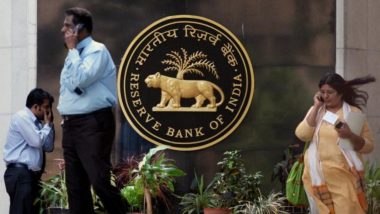New Delhi, April 1: The Reserve Bank of India (RBI), India's central banking institution, celebrated its 85th Foundation Day on April 1, 2020. The apex bank which takes care of the monetary policy of India, began its operations on April 1, 1935 in accordance with the Reserve Bank of India Act, 1934. The RBI is the regulator of entire Banking in India and plays an important part in the Development Strategy of the Government of India. It regulates commercial banks and non-banking finance companies working in India and also serves as the leader of the banking system and the money market. It regulates money supply and credit in the country.
The RBI was nationalised on January 1, 1949 following India's independence on August 15, 1947. As per history, the RBI was founded on April 1, 1935 to respond to economic troubles after the First World War. The top Bank was conceptualized as per the guidelines and outlook presented by BR Ambedkar in his book titled “The Problem of the Rupee – Its origin and its solution” and presented to the Hilton Young Commission. RBI Says Ready for COVID-19 Impact on Indian Economy, Eases Norm on US Dollar Transactions to Provide Liquidity to Forex Market.
Salient Features of the Reserve Bank of India (RBI):
- The RBI is headed by the governor, currently Shaktikanta Das. There are four deputy governors. This time its B. P. Kanungo, N. S. Vishwanathan, Mahesh Kumar Jain, and Michael Patra.
- The central board of directors is the main committee of the central bank and the Government of India appoints the directors for a four-year term.
- The logo of the RBI has a tiger and a palm tree which was inspired by East India Company’s Double Mohur which had a lion instead of tiger. Financial Year of RBI is 1st July to 30th June.
- The RBI has four regional representations- North in New Delhi, South in Chennai, East in Kolkata and West in Mumbai.
- The primary objective of RBI is to undertake consolidated supervision of the financial sector comprising commercial banks, financial institutions, and non-banking finance companies.
- Other than the Government of India, the Reserve Bank of India is the sole body authorised to issue banknotes in India.
- The RBI maintains the economic structure of the country so that it can achieve the objective of price stability as well as economic development.
The preamble of the Reserve Bank of India describes the basic functions of the reserve bank as: "to regulate the issue of Bank notes and keeping of reserves with a view to securing monetary stability in India and generally to operate the currency and credit system of the country to its advantage; to have a modern monetary policy framework to meet the challenge of an increasingly complex economy, to maintain price stability while keeping in mind the objective of growth."
(The above story first appeared on LatestLY on Apr 01, 2020 10:24 AM IST. For more news and updates on politics, world, sports, entertainment and lifestyle, log on to our website latestly.com).













 Quickly
Quickly


